Amazing Artisan Bread for 40 Cents a Loaf - No Kneading, No Fussing, No Kidding
 February 26, 2010
February 26, 2010 Update: If you're interested, I've written an update on this technique here.
What if I told you that instead of buying bakery bread for four or five dollars a loaf, you could make delicious handmade bread whenever you wanted, at a fraction of the cost and it is so easy a kid could do it? Well, read on because this method of making artisan bread at home will change your life.
You can make incredible bread without having to do all the usual time consuming tasks of breadmaking :
- no need to make a new batch of dough every time you want bread
- no need to proof yeast
- no need to make starters or prefermented dough
- no kneading!
In the last few years, several methods for making easy no-knead bread doughs have crept up on the internet and gained popularity. Among the most popular have been Jim Leahy's No-Knead Bread and Jeff Hertzberg and Zoe Francois' Artisan Bread in Five Minutes a Day. These breads drastically cut down the amount of time and work that it was always assumed had to go into artisan bread making. Even the Zen Master of bread making, Peter Reinhart, has jumped onto the bandwagon, admitting that these no knead methods have made him rethink everything he knew about breadmaking:
"The results have forced me to reconsider all of the premises I once held sacrosanct".
So what is going on here?
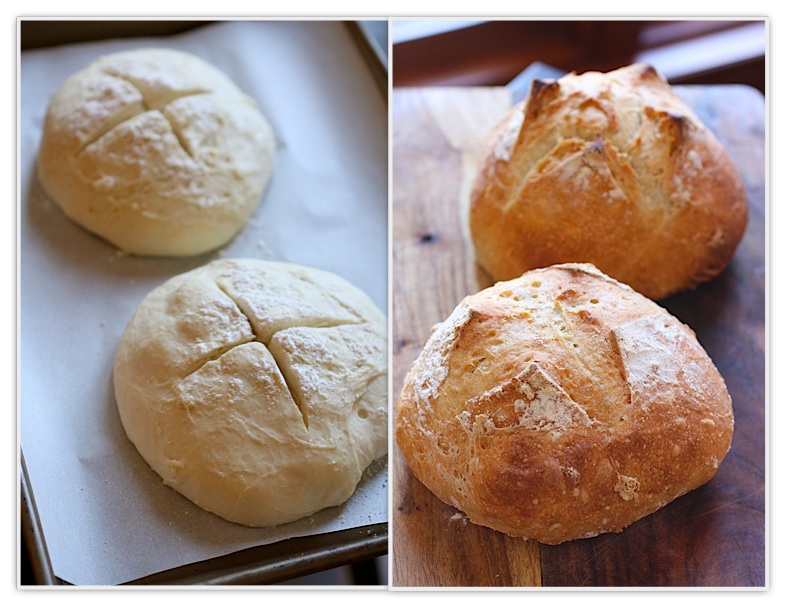
Boules Rising and Boules after Baking
The key is mixing up a high moisture, or "slack" dough, and letting it do a long fermentation in the refrigerator. It's long been known that a long fermentation contributes flavor to dough but it seems it also develops gluten and eliminates the step of kneading. The advantage in using refrigeration is that you can control the fermentation and you can make up a large batch of dough, enough for four loaves, and keep it in the fridge. If you make a very wet dough, it will be able to last in the refrigerator a long time, gaining flavor as it ferments and allowing you to make bread whenever you decide. This is not to say there is not a place for multi-stage, time-consuming bread making techniques which require 15 minutes of kneading - I love making my homemade focaccia, which takes three rises every time I make a batch. But this bread is absolutely a no-brainer. You mix up a big batch of dough in one container, a process which takes only a couple of minutes (remember, there is no proofing of yeast or starters to make). When you want bread, you cut off a hunk of dough and shape it. You can make various sizes and shapes: boules, batards, rolls or baguettes. It's just so convenient and makes such a beautiful bread with a crackly crust, you won't believe it. I've even shaped the dough into rolls. Peter Reinhart points out that the home baker has an advantage over the commercial baker with this technique - the commercial bakery does not have the refrigeration space to use a method like this. As a home baker, we can make up small batches of dough, refrigerate it and enjoy fresh bread whenever we want it. If you are buying fresh bread three times a week at $4.00 per loaf, you are spending about $50 a month on bread! This bread is only about 40 cents a loaf to make. And, since bread is best the day it is made, you don't have to drive to the grocery/bakery to get it every time you want a loaf.
To see how easy it is to get a loaf ready, you can watch me form a loaf in about 30 seconds:
This bread is very versatile, also. In both Peter Reinhart's book and Jeff Hertzberg and Zoe Francois' book, they give you many variations of breads made with the master bread recipe in each book. You can make whole wheat breads, cheese breads, herb breads, breads stuffed with sun dried tomatoes, Challah, Semolina Bread and on and on. Jeff Hertzberg and Zoe Francois have come out with another book, "Healthy Breads in Five Minutes a Day", for people who would like more whole grain recipes and gluten free breads. This is a great book, too, and has lots of wonderful ideas in it. I have all three books and strongly recommend them if you want to try easy bread making. It's nice to be able to make bread whenever the whim hits you - I have several types of doughs in my refrigerator, happily fermenting away.
In these recipes, instant yeast is used, which eliminates the need for "proofing" the yeast. Everything is simply mixed together. If you are interested in learning more about yeast, my recent "Yeast Explained" post may be of interest to you. Instant yeast is sometimes labeled "fast acting yeast" and is sold under the names of "Rapid Rise" and "Quick Rise" yeast. Also, Bread Machine yeast is simply instant yeast. I like to buy my yeast in the little jars instead of the packets because I can use only as much as I need out of the jar and it tends to be cheaper.

One way of letting the dough rest and rise is to place it on a pizza peel, dusted with some cornmeal. This works well when we make pizzas and pop them right into the oven. However, for this the bread seems to stick because you have to let it sit so long on the pizza peel and rest. So I place a small square of parchment paper on the pizza peel and put the dough right on that. When I slide it into the oven, it goes in along with the parchment paper and bakes up beautifully. If you want an extra crispy crust, just remove the parchment paper halfway through the baking time and return the bread to the pizza stone - this is what I do.
The dough can be stored in any plastic container with a lid or a bowl with plastic wrap placed over it. You want the gases to be able to escape as the dough rises, though - so wrap the plastic wrap over the bowl tightly and then puncture a little hole in the top. It is nice to have a dedicated plastic container, though, in the fridge for your dough, because you are going to just keep it in there all the time. Although these containers are recommended by the authors and the King Arthur Flour website has these nice dough rising buckets, I bought a square plastic-lidded container at my local grocery store because I thought it fit in my fridge better. You can see it in the photos below. I place the lid on tightly, but I punched a small hole in the top. This is important to do.
So get out a bowl if you don't have a plastic container, mix up a batch of dough and have your first loaf tomorrow. You won't believe it.
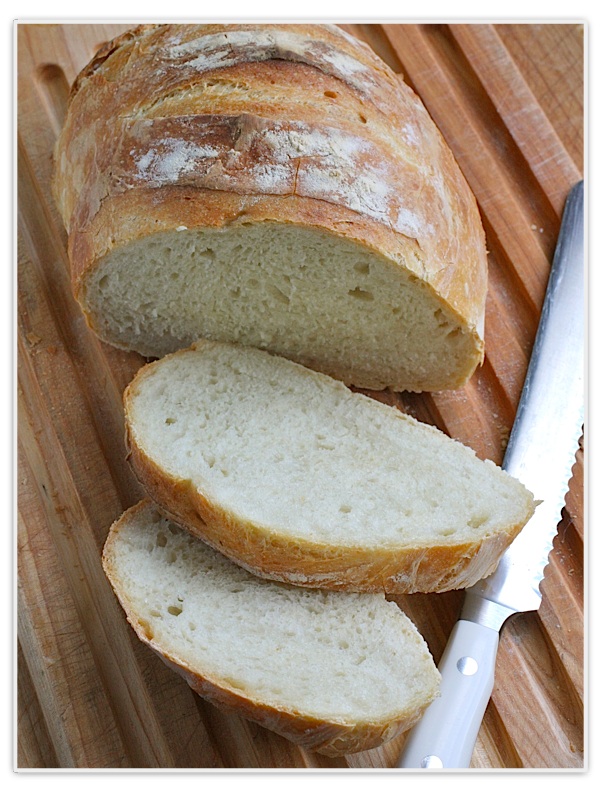
No Knead Artisan Bread
adapted from Artisan Bread in Five Minutes a Day
for a printable recipe, click here
makes four 1 pound loaves.
Ingredients:
- 3 cups lukewarm water
- 1½ tablespoons granulated fast acting (instant) yeast (2 packets)
- 1½ tablespoons kosher or other coarse salt
- 6½ cups unsifted, unbleached all purpose white flour*
(My favorite way to make this bread now is to use half bread flour, half all-purpose flour and throw in ½ cup wheat bran into the dough.)
*After baking, if your bread is gummy on the inside, try either increasing the amount of flour by ½ cup and/or increasing the baking time by 10 minutes.
Instructions:
Mixing and Storing the Dough
1. Warm the water slightly. It should feel just a little warmer than body temperature, about 100 degrees F. Warm water will rise the dough to the right point for storage in about 2 hours.
2. Add yeast and salt to the water in a 5 quart bowl or a plastic container with a lid.
3. Mix in the flour - kneading is unnecessary. (Note: I dump all this in my KitchenAid mixer, let it mix it for just about 10 seconds and then put it in the plastic container. I just find it easier to let the mixer do this part). Add all of the flour at once, measuring the flour by scooping it and leveling it off with a knife. Mix with a wooden spoon - do not knead. You're finished when everything is uniformly moist, without dry patches. This step is done in a matter of minutes. The dough should be wet and loose.
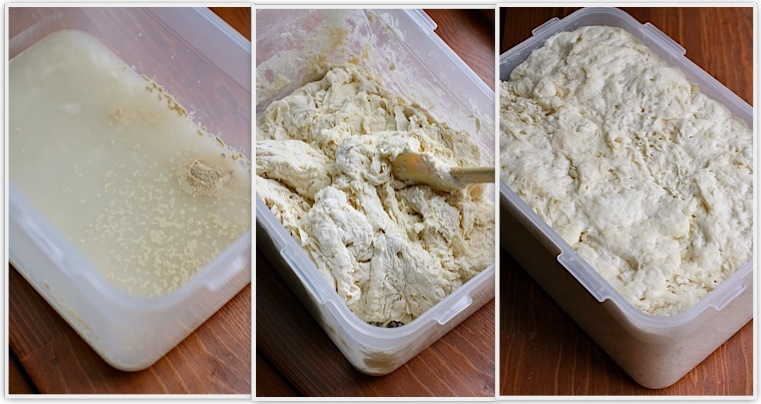
4. Allow to rise. Cover with a lid (not airtight). Lidded plastic buckets designed for dough storage can be purchased many places. (I used a plastic square food storage container I got at my local grocery store. I now use a Rubbermaid 21-cup Dry Food Container. I punched a hole in the top). You want the gases to be able to escape a little. Allow the mixture to rise at room temperature until it begins to collapse (or at least flattens on top), about two hours. Longer rising times will not hurt your dough. You can use a portion of the dough any time after this period. Fully refrigerated wet dough is less sticky and is easier to work with than dough at room temperature. So, the first time you try this method, it's best to refrigerate the dough overnight (or at least 3 hours) before shaping a loaf.
Baking
5. Shape your loaf. Place a piece of baking parchment paper on a pizza peel (don't have a pizza peel - use an unrimmed baking sheet or turn a rimmed baking sheet upside down). Sprinkle the surface of your dough in the container with flour. Pull up and cut off about a 1-pound piece of dough (about the size of a grapefruit), using scissors or a serrated knife. Gently stretch the surface of the dough around to the bottom on all four sides, rotating the ball as you go. Dust your hands with flour if you need to. This is just to prevent sticking - you don't want to incorporate the flour into the dough. The top of the dough should be smooth - the object here is to create a "gluten cloak" or "surface tension". It doesn't matter what the bottom looks like, but you need to have a smooth, tight top. This whole step should take about 30 seconds! Place the dough onto your parchment paper.

6. Let the loaf rise for about 30 - 40 minutes (it does not need to be covered). If it doesn't look like it has risen much, don't worry - it will in the oven. This is called "oven spring".
7. Preheat a baking stone on the middle rack in the oven for at least 20 minutes at 450 degrees F. Place an empty rimmed metal baking pan or broiler pan on a rack below the baking stone. This pan is for holding water for steam in the baking step. (If you don't have a baking stone, you can use a baking sheet, but you will not get the crisp crust on the bottom. You will still have a great loaf of bread. Baking stones are cheap and easy to find - Target carries them - and are a must for making pizzas, so go out and get one as soon as you can.)

8. Dust the loaf with a little flour and slash the top with a knife. This slashing is necessary to release some of the trapped gas, which can deform your bread. It also makes the top of your bread look pretty - you can slash the bread in a tic tac toe pattern, a cross, or just parallel slashes. You need a very sharp knife or a razor blade - you don't want the blade to drag across the dough and pull it. As the bread bakes, this area opens and is known as "the bloom". Remember to score the loaves right before baking.
9. Bake. Set a cup of water next to your oven.* Slide the bread (including the parchment paper) right onto the hot baking stone. Quickly pour the water right into the pan underneath the baking stone and close the oven door. This creates the necessary steam to make a nice crisp crust on the bread. Bake at 450 F for about 30 - 35 minutes, depending on the size of your loaf. Make sure the crust is a deep golden brown. When you remove the loaf from the oven, you will hear it crackle for a while. In baking terms, this is called "sing" and it is exactly what you want.
* update: I have recently begun skipping this step with the water. I believe it caused my oven window to eventually crack and I have found that my bread is still great even without the water. If you want an extra crispy crust, though, it is worth doing once in a while
10. Cool. Allow the bread to cool for the best flavor and texture. It's tempting to eat it when it's warm, and that's fine, but the texture is better after the bread has cooled.
11. Store the remaining dough in the refrigerator in your lidded (with a hole punched in the top) container and use for up to 14 days. Every day your bread will improve in flavor. Cut off and shape more loaves as you need them. When your dough is gone, don't clean the container. Go ahead and mix another batch - the remaining bits of dough will contribute flavor to the next batch, much like a sourdough starter does!
Bread is best eaten the day it is baked. Leftover baked bread is best stored at room temperature, unwrapped. Simply place the cut side of the bread on plate or counter. If your bread is gummy on the inside, try either increasing the amount of flour by 1/4 cup and/or increasing the baking time by 5-10 minutes.
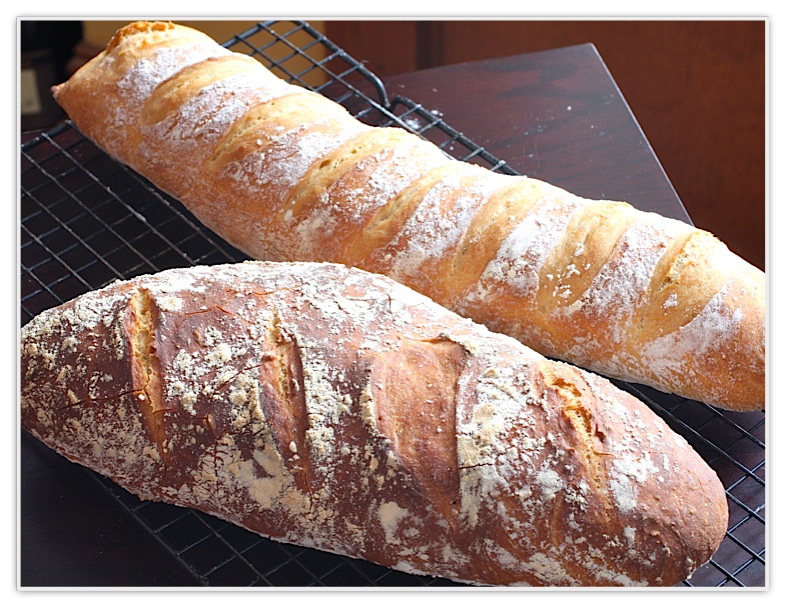
Check out the Artisan Bread in Five Minutes a Day website - Jeff and Zoe have great tips and recipes over there.

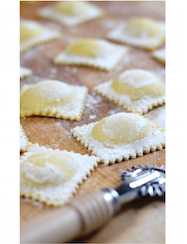
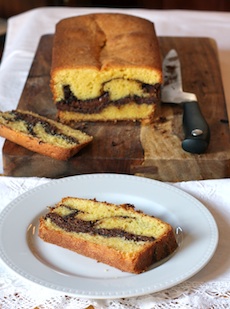
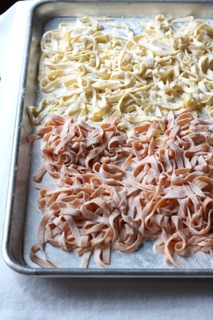
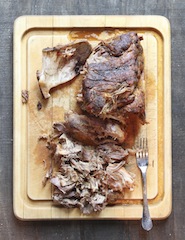
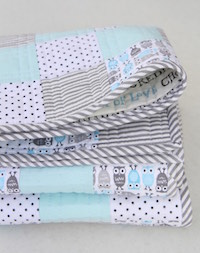
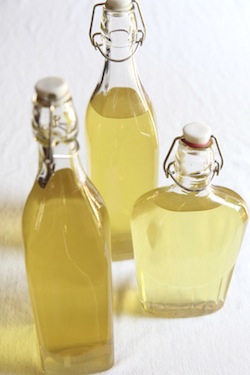
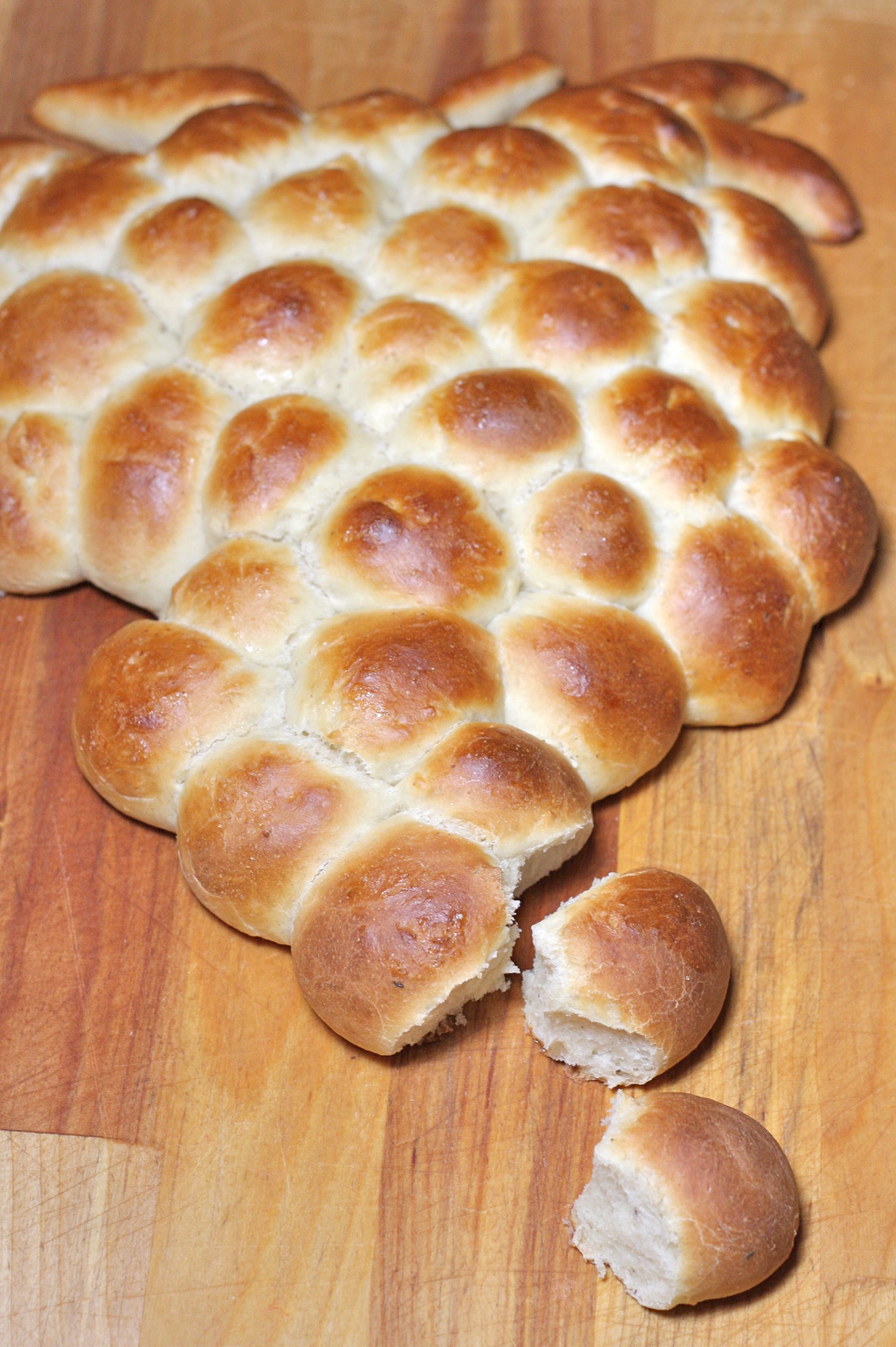

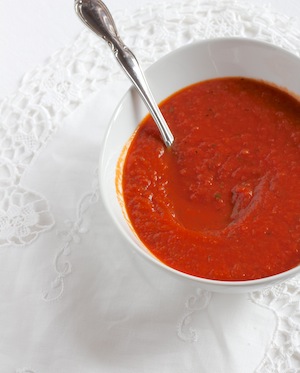
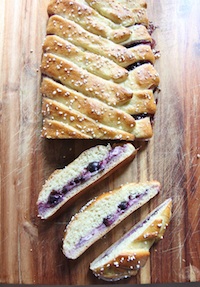

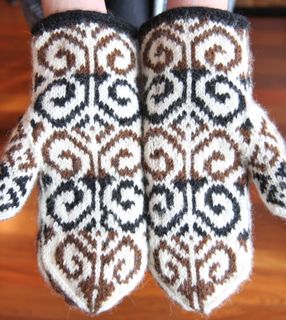






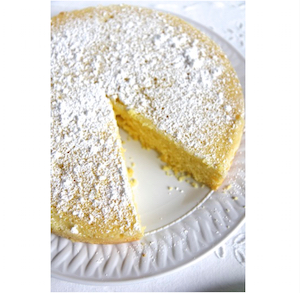
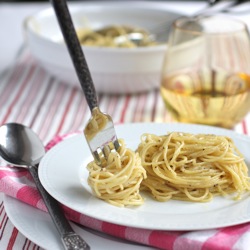


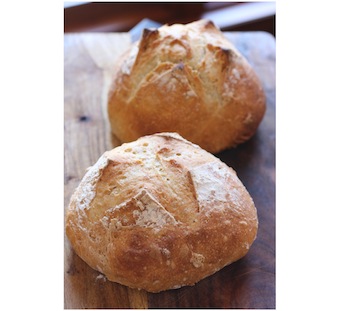


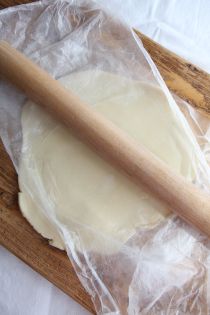

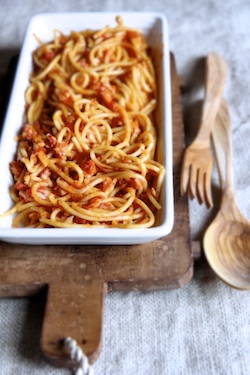
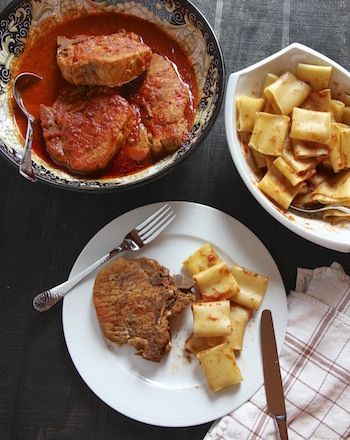









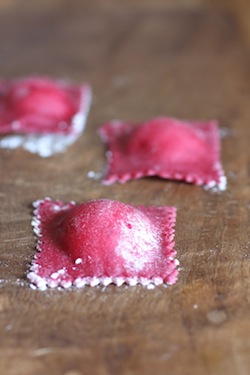

Reader Comments (468)
I tried this recipe and after only 25 minutes the outside was rock hard and there were parts on the inside that were not fully cooked. Any ideas what I did wrong?
From The Italian DIsh:
Amanda: Sorry this happened to your bread! It's more common to have a wetter inside than a rock hard crust. That's kind of strange. There are a couple of things you can try next time:
1. When you make the next batch of dough, try increasing the flour by 1/4 cup to 1/2 cup more.
2. Make sure to let your bread cool before slicing into it - it needs to cool so the inside is dry.
Hope this helps. Let me know how the next batch turns out.
What happens if I mis-read dosages and used only 1.5 TSP of yeast? Should I just cook the whole batch at this point, or will it be ok to wait for the next time I use it? (I probably didn't use enough salt either, cause I misread the whole part--don't ask why, I've never messed up on dosages). As I was re-reading the comments, realized what I did. However, the dough sat on the counter for over two hours, then I put it in fridge: it probably tripled just about, by the looks of it, by the time I put it in fridge, cause it was almost coming out of the container... I've made many breads and pizzas before, but this method is new to me.
Hi! I found your recipe via pinterest. Oh my goodness, my bread turned out wonderful! My husband was so happy to come home from a long day to fresh hot bread with butter. I'm going to experiment with whole wheat flour and herbs/spices in my next loaves. So long, store bread! Thank you!
What type of yeast do you recommend (brand) for this recipe?
Oh my word, this bread looks delicious! I miss the bread in Italy... :(
Hey, Elaine. I thought I would let you (and maybe the other commenters) know that Cook's Illustrated did a great no knead bread (that I make pretty regularly) and instead of throwing water in (which I am afraid to do, afraid my stone might shatter or something). They preheated the oven with a Dutch oven or Cloche inside to 500 degrees. They put the bread in that and closed the lid, then reduced the baking temperature to 425 and baked it covered for 30 minutes. Then they removed the cover and baked it uncovered an additional 15 minutes or until the internal bread temperature reached about 200 degrees. This creates a steamy environment when it goes in covered and then crisps up when you uncover it.
I'll probably try this cooking method on this bread recipe, I'll let everyone know!
Hope this helps.
Philly
http://togetherinitaly.com/
From The Italian Dish:
Jen: Here is the link mentioned in the post addressing what yeast to use: http://theitaliandishblog.com/imported-20090913150324/2010/1/23/yeast-explained.html
Philly: Thanks for the tips!
Hi! I'm so excited to bake this, but I've been letting it sit for about 3 hours now and my dough still seems a little wet. It has risen a lot but it's definitely too wet (at least from what I can see on the top) to work with at this point. I put it in the fridge for a bit, should I just leave it there for a bit longer? I don't have to bake it for another 4 hours, so I have time. I hope it works out!
From The Italian Dish:
Rachael: As the recipe states, it's much better to use the dough after it has been refrigerated overnight. It will be much easier to handle and taste better, too! The dough is a very wet dough, compared to what we are used to seeing in a normal bread dough.
$4.00 a loaf? You are shopping in the wrong places. I NEVER spend that much on bread. As for the recipe... The no-knead breads that I have tried (Jim Leahy's recipe for instance) are very good.
I like making my own bread, not because it's cheaper (it isn't), but because I think it tastes better.
Elaine, what is the size/volume of the plastic container you use for your recipe? So excited to try the no knead bread and want to ensure I have sufficient space in the container for rising.
I have made homemade bread many times over the last 50+ years and this is definitely the best and easiest recipe I have come across. I have been making it on a regular basis over the last few months and have not purchased ciabatta or french bread more than 2-3 times since. My family loves it. I brought a loaf over to a friends and she absolutely loved it. Also, the great thing about it is that it keeps for a few days if properly stored. (No plastic bags, please!). This recipe is ideal for anyone who does not any experience in bread making.
Edie
I forgot to add that I use a heated baking stone and add hot water to a heated pan on the shelf below the stone. (The stone and pan MUST be preheated at the 450 degree temperature for the 30 mins. This helps create a crunchier crust.
Edie
Exclusive blog post.. Thanks for sharing. Keep updating the blog.
Made the dough yesterday and have made three delicious mini loaves since - even my husband raved over it! This will be a staple in my kitchen from now on. Thanks for sharing! x
Hi All, I just want to mention that a good way to get a crispy crust on your bread is by a technique I call Mist and Repeat.. Its a process of misting the bread with water ( I use a spray bottle with a mist setting but I actually think they make official oven misters somewhere ). First place the bread as you normally do in the oven and after say 5 to 10 minutes spray the bread with water and allow it to bake off for a few minutes (5 to 10 minutes) And Repeat
I made this and it came out gummy inside.but springy and crispy. is it possible to add flour to the remaining dough I have in the fridge?..i would really hate to waste all of that
I made this yesterday and put it in the frig. When I took my piece out, I had more stick daough on my fingers and could not shape the loaf. I followed all of the instructions. What do I do with the sticky dough in the frig> Throw it away? What do I do with this piece of dough? I also want to subscribe to your web site.
Hi. I just found your blog and the bread recipe sounds just great. I have Active Dry Yeast in my pantry right now and its too late to go to the store. If I decide to make my dough using the Active Dry Yeast, will it rise enough to put in the refrigerator or should I handle it differently? Or should I not use it at all? Thanks.
From The Italian Dish:
Kim: I think when you break off a piece of dough for your bread, you could incorporate more flour into it at that time. Just add a little bit at a time and knead it until it's all absorbed. That should help.
Nellie: if you find the dough to sticky to handle, just add more as I described to Kim in the previous comment. Next batch you make, you can add maybe half a cup more of flour to your dough and see if that is better.
MaryAnn: you can certainly use active dry yeast. You just need to use a tiny bit more and proof it in a little warm water.
Just pinned and made this dough and I am so excited to try it tonight. It turned out beautiful!
Thanks for sharing!
I use a deep cast iron skillet with a tight fitting lit and it works just fine to create the chewy crust and I get the crisp bottom.
HI, for more than two years I was visiting your site and finally I made my bread from your recipe. I'm very happy with the results as well as my family. Just a little disapointed with the salt, for my taste was so salty so I'll be reducing the amount of slat to a one tablespoon. I'll be posting the results next time. Blessings
Nancy
Am not a baker but you blew me away with how easy this appears to be. I will definitely make it & share the bounty with family & friends. I stumbled upon this site while trying to find stuffed bread recipes which showed your stuffed pizza bread. Love your site, the how-to's/tips like the bread sold me, bookmarking!
hi, followed your recipe, but the bread turn out kinda of dense and gummy. i used active dry yeast. any possible reason i went wrong?
From The Italian Dish:
Sean: If you read through a lot of the comments, this is an issue sometimes. Batches of bread dough can be highly variable depending on what kind of flour you use and the humidty, etc. etc. The active dry yeast was not the issue (although Instant Yeast is easier to use). Try adding a little more flour to the next batch - maybe even 1/2 cup and then bake it just a little longer. Should make a difference. Hope this helps.
Made a batch of dough a couple of days ago. Put it in a Rubbermaid Take along plastic container and punched a small hole in the top. When I opened the lid to get a chunk of dough there were several dry spots on the top. In addition, condensation seemed to occur under the lid and some moisture collected around the edge of the dough. The container size was a little too large for the amount of dough (I cut the recipe in half) so I'm not sure if that had anything to do with it? Any suggestions?
BTW I love your site!! Have made several recipes and loved them all!
I am guessing you use American flour in these recipes ... Yes? An adjustment would be needed if using Canadian AP flour, which is made from winter wheat, has a much higher protein and gluten content and absorbs water quite differently. It's superior for yeast breads and pasta in particular. When mixing with whole wheat no extra gluten needs to be added. As a Canadian who has been baking bread for decades, I had no idea there was such thing as extra gluten to add to flour ... it's simply not necessary here. Maybe some of your readers are having problems with the recipes because they are Canadian and are using the lovely AP flour we take for granted here, and don't know to adjust the water amount.
Here is a link to a chart that explains the differences between Canadian, American and U.K. flours.
http://www.cooksinfo.com/flour
Thank you for sharing! It is amazing and so easy bread to make!! It takes no time, even with my busy schedule Im able to make it..it really makes itself ;) I added few seeds and it turned out awesome too. I make it every second day now, I just love it. I owe you Elaine!!;) have a good day
Hi,
This sounds and looks really yummy.
How would you make a "non-wheat" bread? Perhaps one made from 'rye' and/or 'rice' flours?
Would it be the same amount of the other flours as you have of wheat flour?
Regards,.
Jane
In the three weeks since I discovered this recipe, I have made 4 batches of dough! My family is in LOVE with this bread! I've tried using all AP flour, half AP and half wheat, and our favorite is half bread flour and half AP. I also used this dough for a delicious hearty pizza, as well as an herbed bread. I absolutely LOVE this recipe, and have shared it with everyone I know!!!! Thank you!
From The Italian Dish:
Jane: NO idea! I do know that using all rye flour doesn't work well for homemade flours - you need to blend it with something else like regular AP flour.
Debbie: Thanks so much! I like using half Bread flour/AP flour, too. You can really get creative with this recipe - like adding herbs - have fun!
Love this bread. Have added garlic and or rosemary to it previously and everyone loves it
.
Question, would i be able to substitute 1 C of orange juice for some of the H20 and then add orange zest and sage??? Would this work??? Need to have a bread for a Ham dinner and don't want to do rolls. This bread is just the best.
From The Italian Dish:
Pris: That's an interesting idea! Have never tried that. I don't know why it wouldn't work. I would think the yeast would love the sugar in the orange juice, but I have no idea! If you give it a try, let me know how it was!
I would like this in a printable format. Is that available? Just send to my email address. Thanks!
I tried the original recipe and did EXACT MEASUREMENTS. I used 1/2 Bread flour and 1//2 A P.
The dough is NOT wet nor sticky. ?????
I baked a loaf this morning and it's a tad salty (I'll cut that down a bit) and it didn't rise very much.???
Can I just add more water??
From The Italian Dish:
Diane: If you look under the recipe title, it says "for a printable recipe, click here". That should help.
Thank you so much for this! I had never been brave enough to try making plain bread. I'm usually really adventurous in the kitchen, but just plain bread never seemed interesting enough until now! My husband is really enjoying the results too! (I don't really like bread... so I made it mostly for him)
Thank you so much for this! I had never been brave enough to try making plain bread. I'm usually really adventurous in the kitchen, but just plain bread never seemed interesting enough until now! My husband is really enjoying the results too! (I don't really like bread... so I made it mostly for him)
Great recipie! You can use a Dutch oven covered for 30 minutes in place of the pan of water. Bake last 15 minutes uncovered.
I was looking for a recipe for nice crispy bread and this one seems easy enough. I can't wait to try it.
Thanks!
Jan
Please remove my email address from your system as soon as possible.
I received 250 posts to your site today
OBRIGADO POR ESSA RECEITA MARAVILHOSA AMEI!!!
PARABÉNS!!! DEUS ABENÇOE SUAS MÃES POR DIVIDIR SEUS CONHECIMENTOS COM TODOS.
FICAREI MUITO GRATA EM RECEBER NOVAS RECEITAS....
DEUS TE ABENÇOE
Don't know where I went wrong. I followed instructions precisely and the bread came out with a really nice looking crust.... but inside, it was a disaster. It was extremely salty, and doughy, and heavy, but my German Shepherds seemed to enjoy it.
Advice ?
I have been making this bread for about 3 continuous months now and always have dough in the refrigerator. Can't remember the last time I bought a loaf of bread and doubt I will again!
I know this post is old and I apologize if this question was somehow already answered in the question. Your rectangular box - it looks like a box from the brand "Lock n Lock." Can you look on the bottom and let me know what the VOLUME it says? In ML or QT or OZ ... thank you!
From The Italian Dish:
Hsin: It is a "Rubbermaid 21-cup dry food container". They have them on Amazon, if you can't find one in your local store. Hope this helps!
I started baking this bread a couple months ago when to my dismay our local Costco bakery suddenly discontinued making their demi baguette loaves. I keep this dough on-hand at all times, making a new batch every 1-2 weeks. Haven't bought a loaf of bread since and doubt I ever will again!